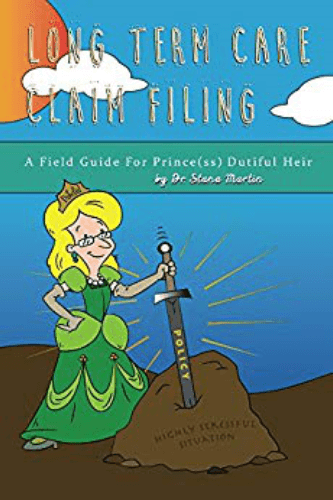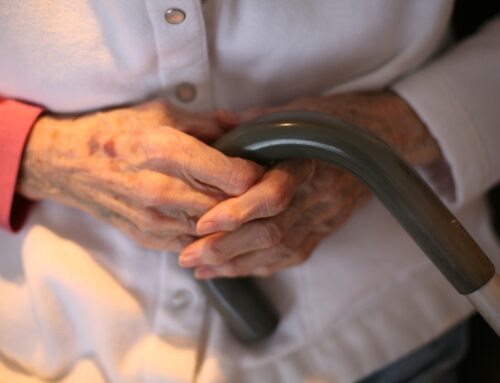Do I Need A Long Term Care Insurance Policy?
Even a casual search on the internet churns up a plethora of articles that both laud and vilify long term care insurance. On the one hand, the high cost of care (home health care, nursing home or assisted living) in conjunction with current laws mean that most of us have to do something to cover this cost -- or risk going bankrupt in our senior years paying for care. On the other hand, the product is not the cheapest insurance you will ever buy. Combined with premium increases recently and the challenges families often have at claim, it is no wonder that there are articles panning this product. As always, the truth for this product lies somewhere between the two extremes
The Up Side: Why We Need Long Term Care Insurance Policies
Truthfully, maybe you won’t need one. 30% of all seniors die with no long term care at all. About 28% of seniors will have less than a year of long term care (usually hospice care). So that is a 58% chance you won’t need it at all or for a rather short-but-expensive run. For the other 42% that need care for a longer window…? The math is heart breaking.
Now for a little math… The average cost of care in the USA today (AALTCI data) is $60,000 annually to $75,000 – the variance is geographical with some areas being much higher than others (see the Cost of Care map at www.longtermcare.gov for survey data by state). The current estimates are that these prices will double every 20 years with inflation at 3%. The table below identifies the projected cost of care. For the average 50 year old today whose life expectancy is in the 80s, the cost is expected to nearly double twice by the time long term care happens. Would it not be mind boggling to pay $15000 to $24000 for care when you are 80? [Figure 1].
FIGURE 1
| AGE | Cost Now Per year | Annual Cost in 20 years | Annual Cost in 40 years |
| 50 | 60,000 | 120,000 (at age 65) | 240,000 (at age 80) |
| 60 | 60,000 | 120,000 (at age 75) | 240,000 (at age 90) |
| 70 | 60,000 | 120,000 (at age 85) | 240,000 (at age 100) |
The numbers grow exponentially. For those who think this is an unreasonable expectation, I would remind them at how fast the price of milk or gas has gone up in their lifetime. This doubling rate, if anything, is on the low side.
On math alone, we have to plan a minimum of $360,000 per person to pay for the costs of care for 3 years. This does NOT include medical expense for the “in-care spouse” OR living expenses for a well spouse who is still maintaining a home (not to mention his or her medical expense!). So to fully self-insure this, most couples in their 50s today need to plan on having well over a million in net worth AFTER they have lived 20 years as “retired” persons.
When you factor in the impact of an aging generation of Baby Boomers, it starts to look particularly grim…
The greying of America has not been a secret. Boomers are turning 65 at the rate of 10,000 to 15,000 per day. They are the largest generation in the US. When you roll time forward 15 years (when the cost of care has doubled by the way), these people will be in their 80s and starting to need care. We know that the generation behind them has fewer people. Fewer people, means small numbers of workers paying taxes to support the weight of need at the top of the aging bracket. To avoid going into complex formulas, let’s just ask ourselves a logic question: is it possible for a smaller number of workers to pay enough taxes to support a larger number of older people whose medical and care costs are skyrocketing with each passing year? The answer is a resounding “no”. Even today, with the Boomers not yet at their peak need, we are seeing Government programs like Social Security, Medicare and Medicaid groaning under the load. This trend has no reason to reverse itself in the near future. Until the last of the people born in the early 1960s waltzes off this mortal coil, this problem is with us. Since the problem is already severe, there is little chance that any government reform will redress this with government dollars. And all portents point to it getting worse not better…
What?!?! How can it be worse?!
It is the combined problem of labor shortage and medical advances. Remember that as the Boomers age, they will need care givers. Didn’t we just identify that there are fewer workers in the generation behind? Right now the medical services industry is short on care givers and this is expected to be a particularly severe shortage for folks who do direct level care like certified nurses’ assistants and LPNs or RNs. So now supply and demand kick in – short supply of workers with high demand for them always drives the price up. Add to this the fact that medical technology continues to advance — we are now able to keep people alive who once would have passed away.
Strokes are a fine case in point. 50 years ago most victims of a stroke (CVA) died immediately or shortly thereafter from complications or a second stroke. Now however, stroke victims routinely survive the stroke. That is the good news. The not so good news is we have a record number of folks that have survived a stroke, but now need care services. And this is only one disease… We have managed to slow the progression of dementia which allows family to enjoy their loved one longer, but also tends to prolong the time in care. We have new drugs and new procedures nearly each year that very nearly cure us – it is the “very nearly cure” that drives the growth in care. Last but not least we are simply living longer. If a person lives long enough they eventually need care because they are simply frail. So yes, the situation for elder health care does get increasingly worse. Since math estimates earlier in this article are probably conservative with regard to the rising costs, the long term outlook for elderly health care is distinctly worse.
So between math, economics, and demographics, this problem is just not going to go away. Insurance is the one and only hedge against this heavy cost of care for the aging. Clearly the government has shown intent that they would prefer individuals purchase an insurance product to cover the cost of this care. They have passed a number of laws since 1996 trying to give incentives to consumers to purchase their own coverage.
Since 70% of all seniors will need some long term care services before they die, the betting person should be betting on buying long term care insurance in order to cover their health care costs as they age. Even financial gurus like Dave Ramsey and Suzie Orman recommend people buy this product in their 50s (by 60 at the latest).
So here is the bottom line: While there is a chance you won’t need any (or much) care, if you DO need care, the costs are staggering and often put the well spouse at risk and/or drain the assets to zero. Insurance is your only hedge against this.
Questions?
Contact - Mrs. LTC
Long Term Care Claims & Insurance
Question about a Claim?
Shopping for coverage?








Leave A Comment
You must be logged in to post a comment.